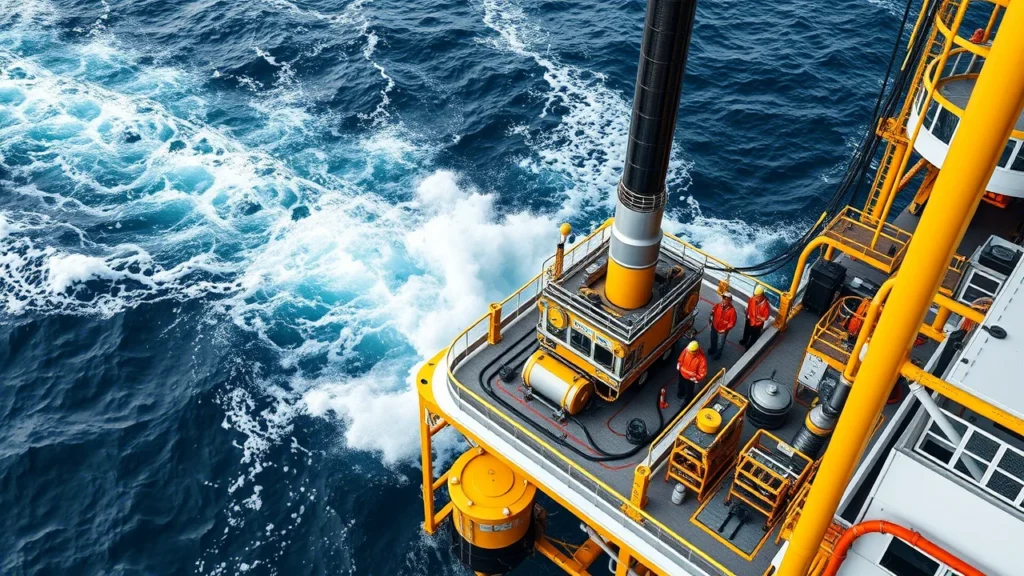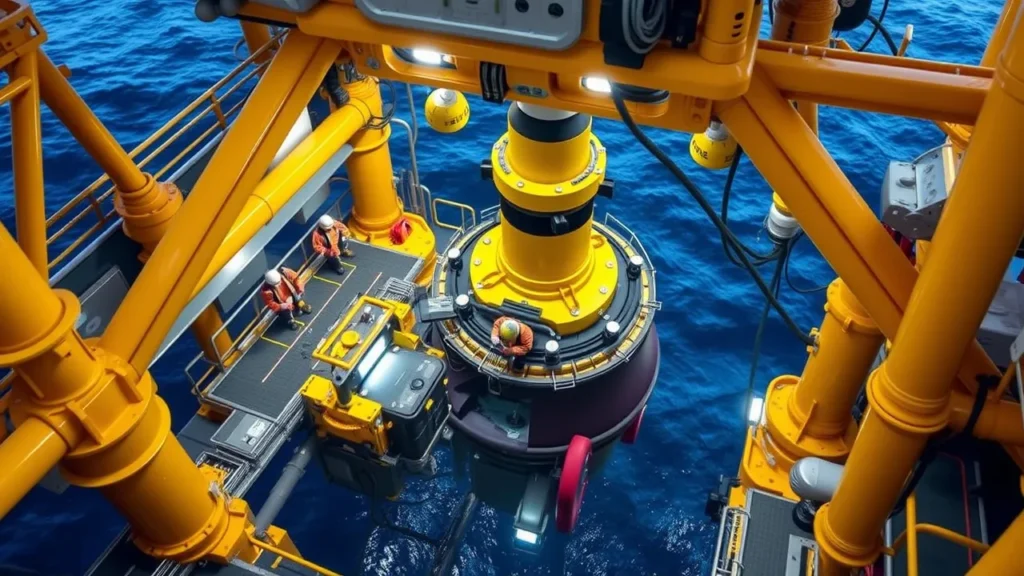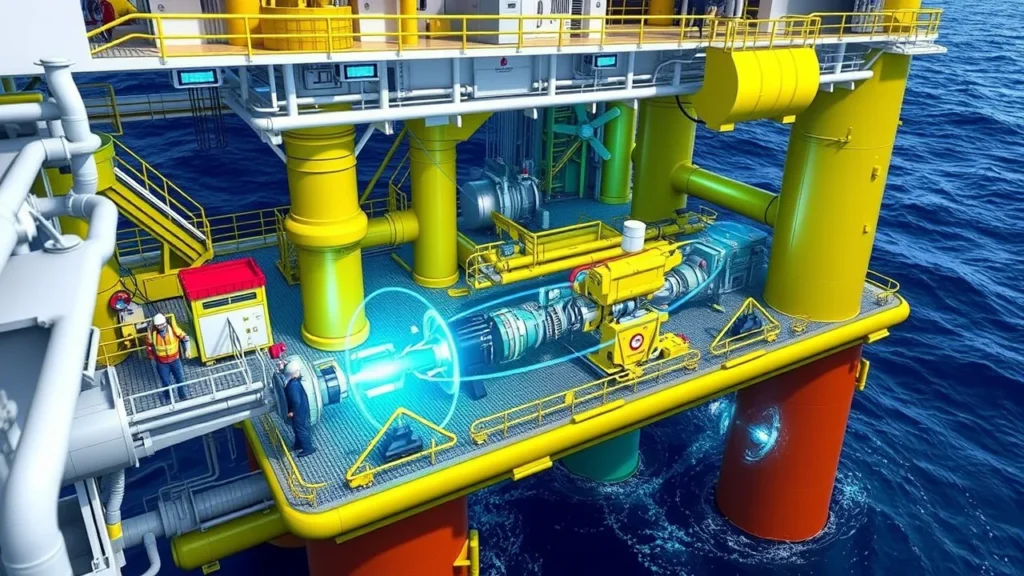The world beneath our oceans holds untapped potential for energy, resources, and scientific discovery. However, accessing these treasures requires cutting-edge advancements in engineering, robotics, and environmental science. This is where deep offshore technology comes into play.
Deep offshore technology refers to the specialized tools, systems, and methodologies designed to operate in extreme underwater environments—often hundreds or even thousands of meters below the surface. These technologies have revolutionized industries such as oil and gas, renewable energy, marine research, and mineral extraction. In this article, we will explore the intricacies of deep offshore technology, its applications, the challenges it addresses, and the exciting possibilities it presents for the future.
The Deep Ocean Environment
To understand the significance of deep offshore technology, one must first appreciate the unique conditions of the deep ocean. The term “deep offshore” typically refers to water depths exceeding 500 meters, where pressure can reach crushing levels, temperatures are near freezing, and sunlight cannot penetrate.
Operating in such an environment demands robust equipment, advanced materials, and innovative solutions. For instance, subsea drilling systems used in oil and gas extraction must withstand pressures equivalent to having a large elephant standing on every square inch of their surface. Similarly, remotely operated vehicles (ROVs) and autonomous underwater vehicles (AUVs) require sophisticated navigation systems to function effectively in pitch darkness.

Applications of Deep Offshore Technology
Energy Extraction: Unlocking Subsea Reserves
One of the most prominent applications of deep offshore technology is in the energy sector. As global demand for energy continues to rise, traditional land-based reserves are becoming increasingly depleted. This has led companies to turn their attention to offshore reserves, particularly those located in deep waters. According to industry reports, over 30% of the world’s oil and gas reserves are found in deep offshore regions. Extracting these resources is no small feat, but deep offshore technology has made it possible. Advanced platforms like floating production storage and offloading (FPSO) vessels allow for the extraction, processing, and temporary storage of hydrocarbons directly at sea. These vessels are equipped with state-of-the-art machinery and safety systems to ensure efficient operations while minimizing environmental impact.
| Key Components of Deep Offshore Technology | Description |
|---|---|
| Subsea Equipment | Includes pipelines, manifolds, and wellheads that operate on the ocean floor. |
| Floating Platforms | Structures like FPSOs and semi-submersible rigs used for drilling and production. |
| Underwater Robotics | ROVs and AUVs for inspection, maintenance, and data collection. |
| Dynamic Positioning Systems | Technology that keeps vessels stable despite strong currents and waves. |
Renewable Energy: Floating Wind Farms and Beyond
Another critical area where deep offshore technology shines is renewable energy. As the world shifts toward cleaner sources of power, offshore wind farms have gained significant traction. Unlike their onshore counterparts, offshore wind turbines benefit from stronger and more consistent winds, making them highly efficient.
However, installing and maintaining these turbines in deep waters poses unique challenges. Floating wind turbine platforms, supported by deep offshore technology, provide a viable solution. These platforms use mooring lines anchored to the seabed, allowing turbines to float while remaining stable. Countries like Scotland and Portugal have already implemented floating wind farms, demonstrating the viability of this approach.
Scientific Exploration: Mapping the Unknown
In addition to energy production, deep offshore technology plays a pivotal role in marine research and exploration. Scientists rely on advanced equipment to study ecosystems, map the seafloor, and investigate geological formations. For example, multibeam sonar systems mounted on research vessels create detailed 3D maps of the ocean floor, revealing features such as underwater mountains, trenches, and hydrothermal vents. These discoveries not only expand our understanding of Earth’s geology but also shed light on the origins of life itself. Hydrothermal vent ecosystems, powered by chemosynthesis rather than photosynthesis, challenge conventional notions of biology and offer insights into extraterrestrial life forms.

Challenges Facing Deep Offshore Technology
Despite its numerous benefits, deep offshore technology faces several challenges. One major concern is cost. Developing and deploying equipment capable of functioning in harsh underwater environments requires substantial investment.
Additionally, logistical complexities arise due to the remote nature of many deep offshore sites. Transporting personnel and supplies to these locations often involves long journeys across treacherous seas. Weather conditions further complicate matters, as storms and high waves can disrupt operations and endanger workers.
Environmental considerations also loom large in discussions about deep offshore technology. While the technology enables access to valuable resources, it must be balanced against the need to protect fragile marine ecosystems. Oil spills, noise pollution from seismic surveys, and habitat destruction caused by mining activities pose significant risks to ocean biodiversity.
To address these concerns, researchers and engineers are developing eco-friendly alternatives. For instance, bio-inspired designs for underwater vehicles mimic the streamlined shapes of marine animals, reducing drag and energy consumption. Similarly, carbon capture and storage technologies integrated into offshore platforms aim to mitigate greenhouse gas emissions.
Future of Deep Offshore Technology
Looking ahead, the future of deep offshore technology appears promising. Emerging trends suggest that artificial intelligence (AI) and machine learning will play increasingly important roles in optimizing operations.
AI-powered algorithms can analyze vast amounts of data collected by sensors and satellites, providing real-time insights into weather patterns, equipment performance, and resource distribution. Predictive maintenance systems, driven by AI, can identify potential failures before they occur, minimizing downtime and repair costs. Furthermore, blockchain technology may enhance supply chain transparency, ensuring ethical sourcing of minerals and other resources extracted from the deep ocean.
Another exciting development is the rise of hybrid energy systems. By combining different renewable energy sources, such as wind, wave, and tidal power, these systems maximize efficiency and reliability. For example, a floating platform equipped with wind turbines could also harness wave energy through oscillating water columns or point absorbers. Such innovations not only reduce dependency on fossil fuels but also pave the way for self-sustaining offshore installations.

Collaboration and Public Awareness
Collaboration between governments, academia, and private companies will be crucial for advancing deep offshore technology. Public-private partnerships can pool resources and expertise, accelerating the development of new solutions. International agreements and regulations will also be essential to ensure responsible exploitation of deep-sea resources. The United Nations’ International Seabed Authority, for instance, oversees activities in international waters, promoting sustainability and equitable benefit-sharing.
It’s worth noting that public perception and education play a vital role in shaping the trajectory of deep offshore technology. Many people remain unaware of the complexities involved in offshore operations or the potential benefits they offer.
Outreach programs, documentaries, and interactive exhibits can help bridge this knowledge gap, fostering greater appreciation for the technology and its contributions to society. Schools and universities should incorporate marine science and engineering into their curricula, inspiring the next generation of innovators and problem-solvers.
Conclusion: A Brighter Future Beneath the Waves
Deep offshore technology represents a remarkable fusion of human ingenuity and natural wonder. From powering cities with clean energy to unlocking the mysteries of the deep ocean, its applications are vast and varied. While challenges persist, ongoing advancements continue to push the boundaries of what is possible.
As we look to the horizon, it becomes clear that deep offshore technology will remain at the forefront of humanity’s quest for progress and discovery. Whether you’re an engineer designing subsea equipment, a scientist studying marine life, or simply someone curious about the wonders beneath the waves, there’s no denying the transformative impact of this field. Together, we can harness the power of deep offshore technology to build a brighter, more sustainable future for all.
